
This week we have been keeping up with 'Bush Princess'. We found her close to Oloololo Gate basking in the morning sun, keenly listening and somehow unperturbed by the howling tracker dogs at the ranger’s base station. I am always looking forward to seeing her around and hope that she establishes her territory here.
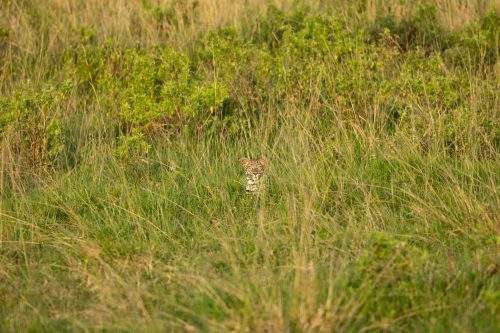
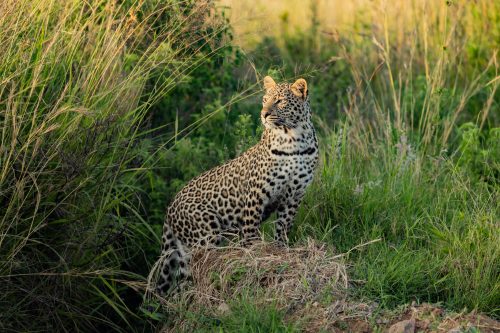
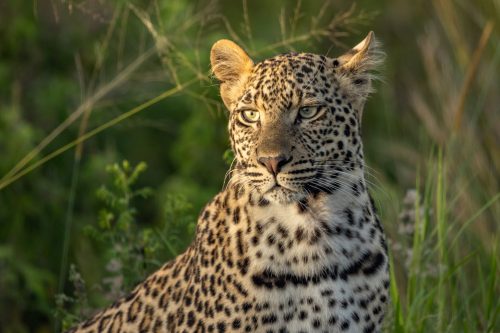

The controlled burning of grass in the Triangle a few weeks ago paved the way for herbivores to move in and in turn, predators. The subsequent cheetah sightings have been incredible. This is Risasi, sister to Ruka and Rafiki, the two brothers we featured recently in our weekly blog. Her name translates to ‘Bullet’ in Swahili and together with her siblings, was born in September 2018. The three have since moved into the Triangle from the Greater Reserve.
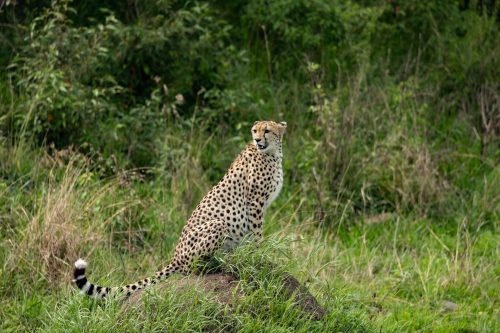
Risasi is heavily pregnant and we found her determinedly going after an impala with its calf that had disappeared into some thick croton bush. She kept circling and was a bit reluctant to follow the impala, possibly unsure of what could be lurking deep inside. Eventually, she gathered enough courage and went after them. A few minutes later we saw mama impala alone bolting out from within the bushes. A life lost to replenish another, in this case, the unborn. Such is the circle of life.

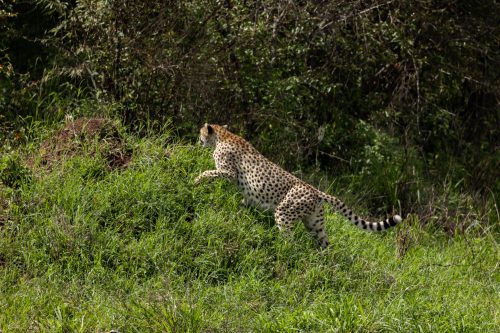
We don’t see quite as much of the River Pride as we would like to as their territory is a heavily forested area where off-roading is restricted. This is the area around Little Governors’ Camp, towards Kichwa Tembo. But since the demise of the Angama Pride, they have been moving closer to the Oloololo Escarpment. We found them devouring the last of a buffalo kill in the company of four Bila Shaka Males.

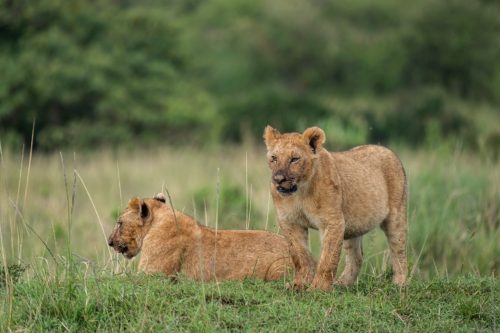


For now, it’s an all-you-can-eat buffalo buffet in the Triangle and the Border Pride were not going to miss out. They were also on the last remains of their kill, looking extremely full and satisfied.
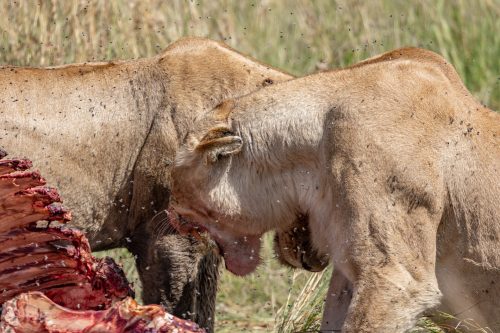


Unfortunately for this poor hyena, it got too close to the fire and got burned. Usually, hyenas wait for the lions to become too hot or full and leave the carcass. Jumping the gun, this hyena was left alive but immobilized, close to where the Border Pride were feasting on their buffalo kill. Lions don’t devour hyenas after killing them, like in the case we recently saw with Shepherd the male leopard, and cannibalism by other hyenas is also uncommon. These lions kept checking on the hyena making sure it wasn’t going anywhere after either breaking its spine or perforating its skull.
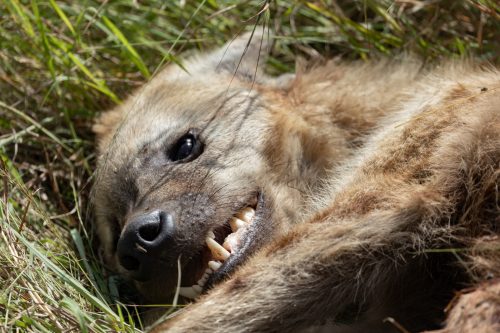
The Inselberg Males secured themselves a different kind of buffet, a hippo kill far from their territory. I found them at a location we call ‘Maji Machafu’ which is close to Mara River and far from the Kenya-Tanzania border where we usually see them. Good news for Slit Lip, as he has been looking so skinny. Adam thinks they are expanding their territory so it will be very interesting to see how things unfold.
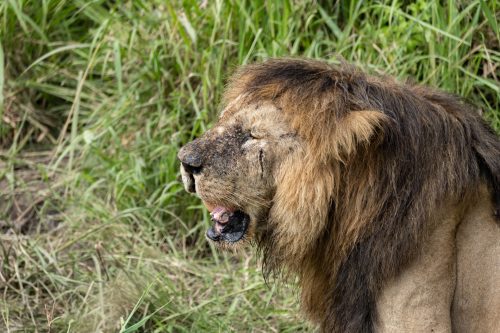
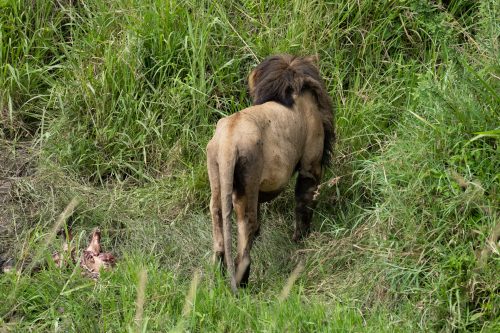
Leopards go for anything to secure a meal— jackals, monitor lizards and vultures are not spared. I found the remains of a devoured vulture hanging from a tree, unmistakably the work of a leopard.
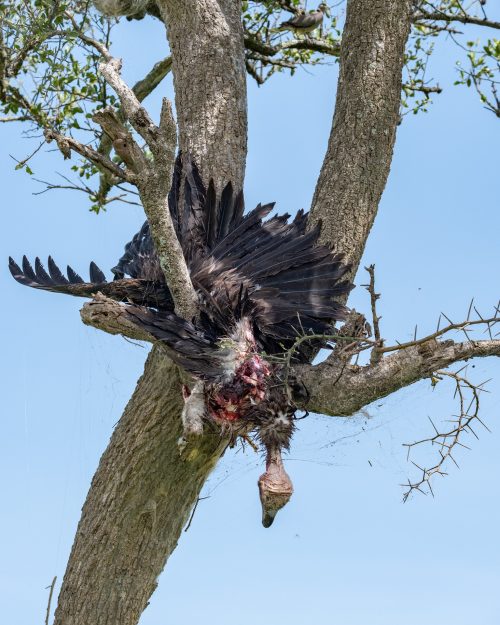
Finally, I got a chance to go out with a birder and here are just a few birds I was able to capture this week.
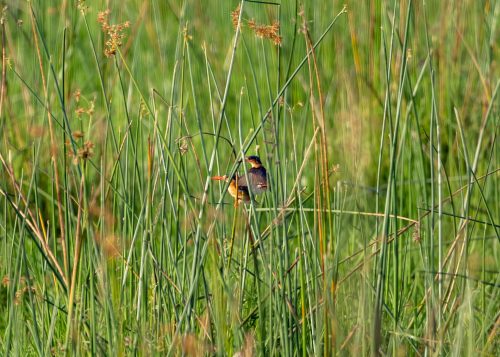

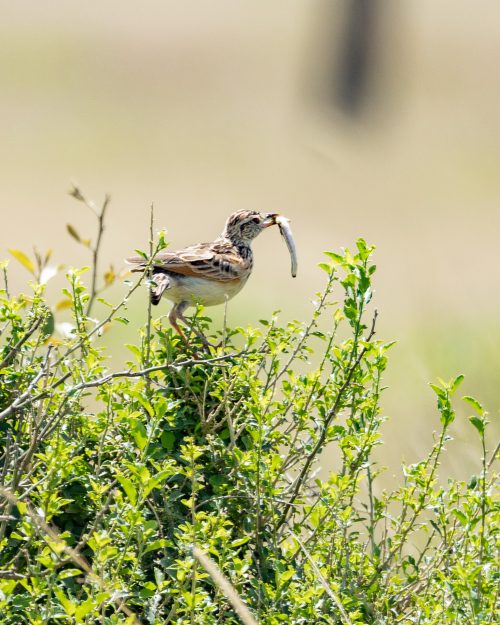

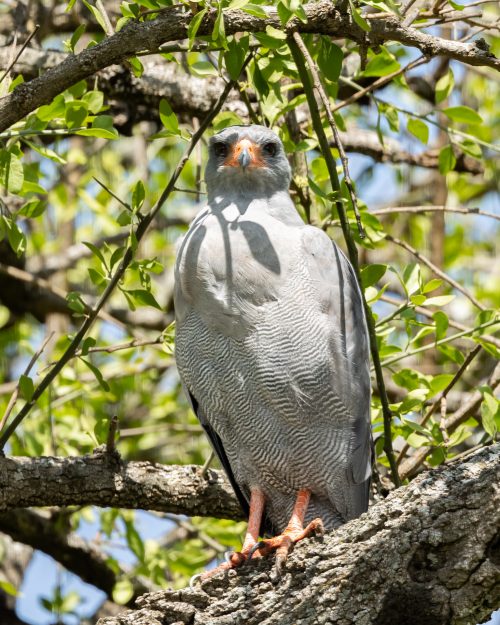

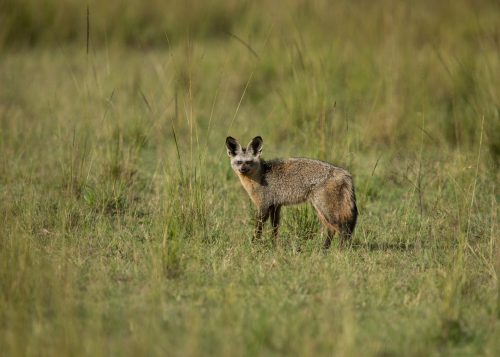
A year ago, Adam was able to spend a few precious moments with one of the Mara's sweetest, and shyest, creatures — a bat-eared fox.
Filed under: This Week at Angama
Subscribe for Weekly Stories
Comments (0):

Angama Safari Camp